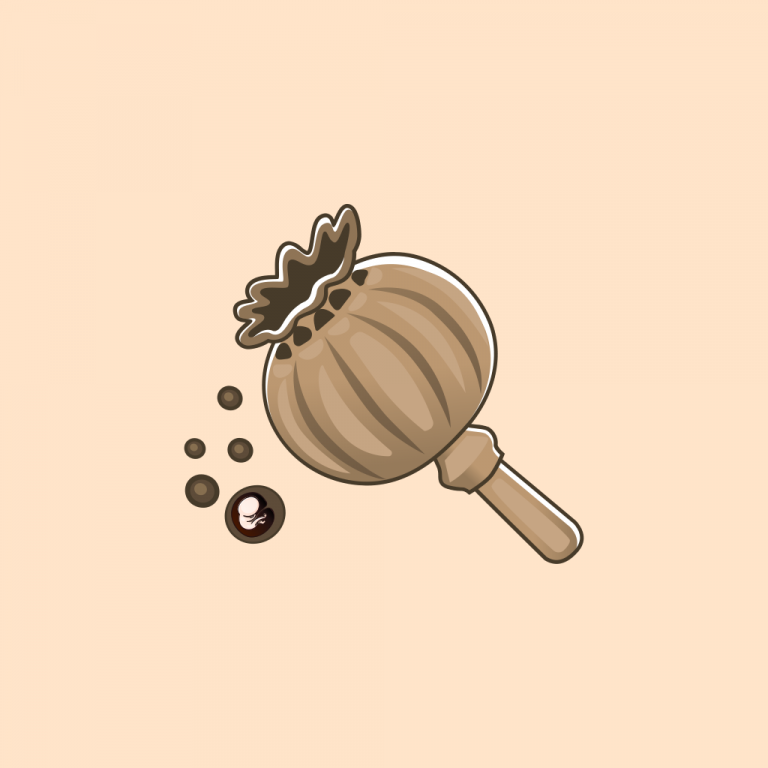Are you at risk for unplanned birth sooner than you thought? You should know about preterm labor and any early signs. Preterm labor You might notice contractions that aren’t regular, lose your mucus plug, or feel intense pain. These can be signs of early labor. It’s vital to be ready, especially if this is your first baby. Various methods can help you be more comfortable or get medical advice. With so many unknowns, being prepared really matters. So, what can you expect, and what should you do if labor begins early?
Key Takeaways
- Preterm labor can have irregular contractions, bleeding, and rupture of membranes.
- The stages of labor include early labor, active labor, and the delivery of the baby and placenta.
- Pain management during labor can be enhanced through techniques like walking, bathing, and relaxation techniques.
- It’s crucial to get to a delivery facility during active labor to ensure appropriate care.
- Postpartum recovery starts immediately after childbirth, focusing on the mother’s healing and bonding with the newborn.
Understanding Premature Labor
Premature labor occurs any time between 20 weeks and 37 weeks. It’s important to know the signs of premature labor to be in case help preterm birth occurs. Watch for contractions that come often and get stronger. They should not stay that way. Real labor doesn’t stop even if you move or change what you’re doing.
It’s key to tell these contractions apart from false ones. This way, you can react fast to protect mom and baby. Even if the contractions don’t stop, nothing aggressive is needed unless the cervix is changing.
It’s important to know what you may experience when labor starts. Real labor will change the cervix like the cervix becoming more dilated and thinning. This happens as contractions continue. moves forward. If you are aware, then you can be prepared. It starts by contacting your pregnancy care provider with your symptoms. Then, you can ask questions and receive guidance. Being ready and acting fast are both very important for mom and baby’s safety.
- Regular and frequent contractions
- Increased intensity and frequency
- Changes persisting despite activity or position
Braxton Hicks contractions may occur as you get closer to the end of pregnancy. Sometimes, it’s hard to tell the difference between Braxton Hicks and real labor. Braxton Hicks are usually infrequent and don’t seem to hurt. But, real labor contractions keep coming and get stronger. You might go to the hospital to be sure that nothing else is needed. If you’re close to 37 weeks, early labor is not so concerning. About half of women with regular early contractions will have the pains to stop which means she didn’t experience real labor. Knowing the signs of premature labor means you can get the help you need quickly.
Causes and Risk Factors of Preterm Birth
Recognize preterm birth causes. High-risk pregnancy health problems such as infection, chronic diseases, and lifestyle factors may lead to preterm labor. Some major risk factors include:
Maternal Health Issues
Your health during pregnancy influences the chance of preterm birth. If you have high blood pressure, diabetes, or anatomic issues with the uterus or cervix, your risk is higher. Past preterm births or having twins or more also raises the risk. It’s crucial to monitor these health problems.
Infections and Chronic Conditions
Infections increase the chance of having a premature baby. Things like uterine infections, urinary tract or kidney infections and other diseases can stress the body may lead to early labor. Having regular prenatal checks during pregnancy helps discover infections early with the opportunity to treat, reducing the risk.
Lifestyle and Environmental Factors
Unhealthy habits and being in bad surroundings can make pregnancy risky. Using drugs, smoking or vaping, and not getting prenatal care are big concerns. Changing your lifestyle and eliminating unhealthy habits does a lot to lower the chance of bad outcomes including preterm labor.
- Maintain regular prenatal care to monitor maternal health conditions.
- Be vigilant about infections and seek timely medical advice.
- Avoid substance abuse and manage stress effectively to reduce the risk of preterm birth.
Signs and Symptoms of Early Labor
How do you know if labor is starting? Knowing signs that show early labor is crucial. This can help you tell if it’s the real deal or a false alarm. It lets you act right when needed.
Persistent Contractions
Persistent contractions are an important early labor sign. They start to happen in a steady way. These get stronger over time and can be painful in the belly and back, almost taking your breath away. Unlike false labor contractions, these true labor contractions don’t stop if you move, drink water, or change position.
Changes in Vaginal Discharge
If your vaginal discharge changes, early labor might be starting. You might see the ‘bloody show’, a mix of blood and mucus. It happens when the cervix starts to open. This is a key sign to note. If you have a watery discharge, your membranes may be leaking amniotic fluid. Definitely ask your pregnancy care team for advice and evaluation.
Pelvic Pressure and Cramps
Feeling pelvic pressure and cramps can also mean early labor. They may feel like bad period cramps or stomach ache. Cramps reaching your back show that your cervix is changing. Knowing these pains can help spot real early labor from Braxton Hicks.
| Warning Signs of Labor | Description |
| Persistent Contractions | Regular pattern, increasing in intensity |
| Changes in Vaginal Discharge | ‘Bloody show’ indicating cervical dilation and effacement |
| Pelvic Pressure and Cramps | Intense menstrual-like cramps extending to the lower back |
Knowing early labor signs is very important. It can lead to quick medical help. This knowledge reduces stress during this crucial time.
Common Myths About Preterm Labor
Many wrong ideas about early labor make people worry. Some believe eating certain foods or doing certain activities can start labor too soon. Yet, science shows no direct link between these things and starting labor early. A healthy diet and light exercise are important, though.
Some think the first sign of labor is the water breaking. But signs of early labor vary a lot. It could first show as contractions, back pain, or different vaginal discharge. It’s vital to know these signs, not just rely on the water breaking.
Preterm delivery myths say once preterm labor starts, it can’t be stopped. But this isn’t always true. About half of women with preterm contractions will have everything calm down without having their baby at that time. Quick action by providers can often delay labor. If you think labor is starting early, talk to your pregnancy care team right away. Knowledge of the truth will remove misconceptions about early labor. Always seek evidence-based information from your pregnancy care team to guide your decisions during pregnancy.
- Myth: Eating certain foods can induce labor.
- Fact: There is no scientific evidence to support this claim.
- Myth: Water breaking is always the first labor sign.
- Fact: Labor symptoms vary, and water breaking is not always the initial sign.
- Myth: Preterm labor cannot be stopped.
- Fact: Early medical intervention can sometimes manage and delay preterm labor.
Knowing these premature birth facts prepares you for anything during pregnancy. By learning the truth about preterm delivery myths, you can lower your stress. You can then make smart choices to keep you and your baby safe.
When Labor Starts Early: What to Expect and Do
If labor starts before expected, it can make any mom-to-be worried. It’s critical to know what to do to keep you and your baby safe. Understand when to ask for help, how to monitor your contractions, when to head to the hospital. Your birth plan may be affected because of the preterm labor.
Monitoring Contractions
First off, time your contractions. Measure them from the start of one contraction to the next contraction. That will tell you the frequency of contractions. Next, how long are they lasting? Contractions that are very frequent before 37 weeks should be reported to your pregnancy care team. Watch how often they happen, how long they last, and how strong they are. If they get more regular and intense, don’t wait. It might mean labor is progressing. Be ready to call your doctor or midwife for advice at any time.
Contacting Your Healthcare Provider
Your pregnancy care team is there for you. If preterm labor seems to have started, don’t delay calling them. They’ll tell you what to do next, like if you should visit for a checkup or go straight to the hospital. Listening to and trusting their advice is crucial now.
Preparing for Hospital Admission
If preterm labor is a possibility, it’s time to get to the hospital. Your hospital bag needs to be already packed with must-haves, including ID, hygiene items, comfy clothes, and anything special you need. Having support from family, friends, or a doula can be comforting. Your birth plan is important. Sometimes, extenuating circumstances like preterm labor and birth of your baby may affect the best plan for you and your baby. The pregnancy medical team will try to follow your wishes as much as possible. This priority helps lower stress and lets you concentrate on your baby.
| Steps | Details |
| Managing Preterm Labor | Watch contractions closely, get in touch with your healthcare provider, and do what they suggest. |
| When to Go to the Hospital for Labor | Look for regular, strong contractions and call a healthcare professional before heading to the hospital. |
| Birth Plan | Make sure your birth plan is packed and known by your medical team for care that’s in line with your wishes. |
| Doula Assistance | Talk with your doula ahead of time for extra support during your hospital stay. |
How to Differentiate Early Labor from False Alarms
It’s important to know the signs of true labor. This helps tell the difference from false labor. Braxton Hicks contractions are common. They’re irregular and often painless. Yet, they can be confused for early labor. True labor contractions come at regular times, get stronger, and more painful. Real labor contractions don’t always disappear.
Keep up changes in the cervix is also critical. True labor makes the cervix dilate and thin out (efface). This is how it gets ready for the baby to come.
If your water breaks, it’s a sure sign of true labor. It can be a lot of fluid or just a bit. But it means things are starting for real. Also, if back pain keeps on and doesn’t go away, you might be in true labor.
Here’s a simple comparison between Braxton Hicks and true labor:
| Characteristic | Braxton Hicks Contractions | True Labor |
| Contraction Frequency | Irregular | Regular, increasing over time |
| Contraction Intensity | Variable, often mild | Becomes more intense |
| Duration of Contractions | May vary | Longer over time |
| Effect of Movement | May ease with change in position | Persist regardless of movement |
Always talk to your doctor if you’re unsure. They can help you know if it’s false or true labor. Recognizing true signs will make sure you’re ready for your baby’s arrival.
Medical Interventions for Preterm Labor
Early labor can lead to preterm birth, but medical help can manage this. Pregnancy care providers recommend certain treatments to help both the baby and the mother. These steps, including medication and care for the newborn, are key in managing early labor.
Tocolytics
Tocolytics are drugs that can reduce and sometimes stop early contractions, potentially delaying birth. This pause allows time for other treatments to help the baby’s lungs mature. By delaying labor, tocolytics enable the use of corticosteroids. These drugs improve lung development in babies, adding to the strategy against early labor.
Corticosteroids
Corticosteroids play a key role in helping babies’ lungs get ready for birth. They are given to mothers facing early labor. These drugs lower the risks babies face at birth, helping them breathe better. This care boosts babies’ health chances outside the womb.
Antibiotics
The pregnancy care team may prescribe antibiotics if an infection is causing or might complicate early labor. These drugs fight off infections, making birth safer for the baby. Using antibiotics is part of a complete plan to manage early labor, promising a better start for the newborn.
| Intervention | Purpose | Benefit for Fetal Outcomes |
| Tocolytics | Suppress contractions | Delays labor, allowing time for additional treatments |
| Corticosteroids | Promote lung maturity | Reduces neonatal respiratory complications |
| Antibiotics | Treat infections | Minimizes risks of infection for both mother and baby |
Managing Early Contractions at Home
If you’re at the right time in pregnancy, managing early labor at home can be calming and empowering. Relaxation techniques during labor like warm baths can reduce discomfort.
Walking and changing your position can also help with the pain. They make you feel more comfortable.
Using relaxation and breathing techniques is a good idea. Many learn them in childbirth classes. These methods make dealing with contractions easier and help you feel more ready. Always monitor your contractions and how you feel, so you know when to go to the hospital.
There are steps to improve managing early labor at home:
- Take warm showers or baths for comfort.
- Keep moving by walking around your home.
- Change positions frequently to find what feels most comfortable.
- Practice relaxation techniques and breathing exercises from childbirth classes.
To keep track of early labor at home, watch your contractions closely. Know when to get to the hospital. These relaxation methods can help you stay calm and positive during the first labor stages.
Importance of Prenatal Care in Preventing Preterm Birth
Prenatal care is a key part of a healthy pregnancy. It helps prevent preterm birth by checking on the mother and baby often. This care also involves making sure the mother is living a healthy lifestyle and looking out for any health troubles. By doing this, many good things come from getting prenatal care.
Regular Check-Ups
Keeping up with your prenatal check-ups is really important. The pregnancy care team check how both the mom and the baby are doing. If there’s a problem, they can catch it early and help solve it. This makes it less likely for the baby to be born too early.
Healthy Lifestyle Choices
Living healthily during pregnancy is a must. Eating well and drinking enough water is good for the baby’s growth. It’s also important to stay away from things like drinking alcohol, smoking or vaping. This helps lower the chance of the baby being born too soon.
Monitoring for Complications
Pregnancy providers watch out for issues like diabetes and high blood pressure. Finding and treating these problems early stops early labor. This means the baby and the mother are safer. It’s another way prenatal care helps.
Emotional and Psychological Impact of Premature Labor
Going through premature labor can be very hard for parents. It affects their mental health. Preterm birth comes with special hurdles that need emotional support. Knowing what to expect and getting ready can lower stress and anxiety.
Dealing with Stress and Anxiety
Feeling stressed and anxious is normal in early labor. It’s key to admit these feelings and learn how to handle them. Simple things like deep breaths and mindfulness can help. So can talking to close friends or family. If stress gets too much, don’t hesitate to get professional assistance.
Support Systems
A good support system is vital in facing mental health issues and early birth. Surrounding yourself with people who care helps a lot. Don’t forget about support groups. They can link you with others in similar spots for comfort and tips.
Long-term Effects on Parents
The impact of preterm birth can last a long time. Parents might deal with postpartum depression or anxiety later. Knowing these risks early lets you find help sooner. This aids your family’s health. Continuous emotional support can be key for handling these issues well.
Long-term Health Considerations for Preterm Babies
Preterm babies sometimes need special care to grow healthy.
Initial Medical Care
In the first days, preterm babies may need monitoring and treatment in a neonatal intensive care unit (NICU) for expert care. This specially trained team use advanced care to address any health issues right away. This quick and focused care helps the baby survive and grow.
Developmental Milestones
Watching how preterm babies meet milestones is important for their long-term health. Pediatric providers keep close track to make sure babies are developing well. By doing so, they can spot and help with any delays early on.
Preventative Healthcare
For preterm infants, keeping up-to-date with check-ups and vaccines is critical. These steps help keep the baby healthy and prevent sickness. Regular visits to the pediatric clinic can make a big difference in a preterm baby’s health over time.
Resources and Support for Families Facing Preterm Birth
Going through a preterm birth is tough, but there are many resources to help. It’s crucial to know where to get support for early labor. Also, finding ways to link up with others in the same situation can really help.
You’ll find lots of tips in books, online classes, and webinars for preterm births. They cover everything from taking care of a newborn to staying strong emotionally. This knowledge is key for your journey.
There are many ways local groups and support teams can help. They can make you feel like you belong and let you share your ups and downs. This support community is a vital source of strength.
Professional organizations focusing on child and mother health are there to help. They offer expert advice, medical info, and the latest studies. This ensures you get the best support for a preterm birth.
- March of Dimes has helpful info and services for preterm baby families.
- The National Perinatal Association helps connect families to much-needed support and stands up for preterm birth causes.
- Many hospitals have support programs for preterm babies and their families.
Looking for these resources can give you strength during this hard time. With a solid support network, facing the challenges of premature labor and caring for your early baby is a journey you won’t take alone.
Conclusion
When facing premature labor, learn the signs, causes, and what to do. Watch for strong contractions, vaginal discharge changes, and pelvis pressure. These could be signals that action is needed. Knowing about Braxton Hicks contractions helps you tell real labor from false alarms. This understanding means you can get medical help quickly, which is key.
Dealing with early birth can be tough emotionally. But, there are medical and emotional supports available. Healthcare providers can give you tocolytics for contractions and corticosteroids for baby lungs. Also, support from loved ones and counselors is very important. It helps lower stress and anxiety related to early labor.
After a preterm birth, careful aftercare is important for mom and baby. Regular prenatal visits and ongoing checks are needed. They help make sure your baby is doing well. Living a healthy life and keeping up with prenatal care lessens preterm labor risks. Keeping informed and ready can lead to the best outcomes for both you and your baby.
FAQ
What are the signs of early labor?
Early labor signs are irregular contractions and the mucus plug discharge. The cervix also starts preparing for birth. Contraction often gets more regular and stronger in active labor.
What should I do if I suspect premature labor?
If you think you’re in premature labor before week 37, watch your contractions. Then, get in touch with your pregnancy provider right away to talk about your symptoms and what to do next. It’s very important to get help quickly.
What are the risk factors for preterm birth?
There are many risk factors, including a past of early birth or carrying twins. Problems with the uterus or cervix can also be a risk. Infections, high blood pressure, and diabetes, along with lifestyle choices, increase the risk too.
How can I differentiate true labor from Braxton Hicks contractions?
Real labor contractions follow a regular pattern, get more frequent and strong, and keep happening. They help the cervix to open. Braxton Hicks contractions, however, are sporadic and usually don’t hurt.
Are there myths about preterm labor that I should be aware of?
There are myths, like thinking specific foods or activities can start labor, or that water breaking is the first sign. Remember, real labor signs can vary a lot. If you’re unsure, chat with a healthcare provider for the right info.
What medical interventions are available for preterm labor?
Pregnancy care providers use different methods to try to stop early labor. They might give you drugs to calm your contractions, help the baby’s lungs, and fight infections that could be causing the labor.
How can I manage early labor at home?
Try things like taking a warm bath, walking, or changing how you’re sitting or lying down. Also, using relaxation and breathing exercises can be soothing. Remember to keep an eye out for any changes in your body’s signs.
Why is prenatal care important for preventing preterm birth?
Getting regular check-ups during pregnancy is key. It helps keep you and your baby healthy, and makes sure any problems are caught early. Choosing a healthy lifestyle and watching for warning signs can lower the risk of early labor.
What are the emotional and psychological impacts of premature labor?
Going into labor early can be very upsetting and stressful. It’s crucial to reach out for emotional and mental health help. Talking to a counselor, joining support groups, and leaning on family and friends can make a big difference.
What kind of medical care might a preterm baby need?
Preemies might need a lot of special medical care when they’re born. They usually start in a NICU for close monitoring and treatment. Following up with the pediatric team regularly and sticking to health check-ups is key for their long-term well-being.
What resources are available for families experiencing preterm birth?
There are many resources, such as support groups and educational materials, that can help parents of preemies. Reaching out to community programs and reliable health organizations can provide valuable support during this tough time.









